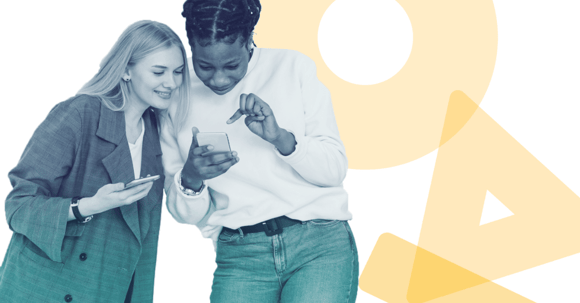What do you do to make learning stick and how do you follow up? Get the four steps to improve your learning content and launch-process.
Imagine that you create a beautiful piece of learning content. You spend hours and days perfecting it. Now, you are excited and ready to launch. But what happens next?
Will the employees take it? And how many? And will they even remember what they have learned?
These 4 steps will guide you to follow up and retain your employees’ knowledge.
Create Content With Gamification
What format is your learning content? Is it a PDF-file or a simple slideshow? If yes, then you should consider a brush-up. Learners will easily find the content dull and lose focus when they flip or scroll through the walls of text.
You might have guessed it already: This is not optimal to increase retention. Instead, you can use gamification to get better results. Gamification is defined by the use of game-mechanics in a non-game-context.
Use a lot of interaction, add quizzes, drag and drop, storytelling, and stand-out visuals, for example. This will boost knowledge retention. In fact, user satisfaction rises in 84 % of the cases, completion increases in 80 % of the cases, and test results are higher in 71 % of the cases.
Use A Learning Platform With Stats
How do you launch your learning content? Do you just send a link or a file to employees’ mail-adresses? If yes, then how do you know who even opens the mail or clicks the link? The right learning platform can tell you this.
Furthermore, a learning platform can make sure that the right type of staff get your learning content. It might not be relevant for Operations to get learning content about ‘How to Improve Sales‘, while it is relevant to Commercials.
On the other hand, it might be relevant for Operations to get learning content about Work Safety. Another advantage with a learning platform is that you can easily follow-up on who has taken the learning and send reminders to those who still need to do so.
Finally, you can check stats on, for example, completion rates and optimize your learning content, if employees seem to stumble upon a specific question in your learning content.
Add Social Learning In The Mix
Social Learning is when we learn together. Here, sharing and discussions are key indicators if you want to boost knowledge retention further.
Think about it. The last time you learned something, did you just watch a video or read a book, and … that’s it? How much of that info do you remember?
Then remember the last time you put something you learned into words and talked about it with a peer or friend – does that knowledge stick a bit better? The answer is: Yes.
Social Learning can be done in a digital setting, for example in i group or community online with room for discussions. But to get most out of Social Learning, you need to do it face-to-face.
Reboard To Refresh
Reboarding is something you give to an employee, who has been away for a longer period of tine or starts in a new role/department in the same company. This is becoming more and more popular in learning and development - with good reason!
An example is, when an employee returns from maternity leave: A week before he or she starts, the company has send him or she a digital learning flow with a mix of a visualization of the new corporate strategy and selfie-videos of new employees. That is part of the reboarding-process.
You can also give reboarding to existing employees. Take it in to consideration, when you plan to launch new learning content. Maybe, your employees can benefit from taking the learning content once more after a month or a half a year. Retaking learning is refreshing, and this is also a booster for knowledge retention.


